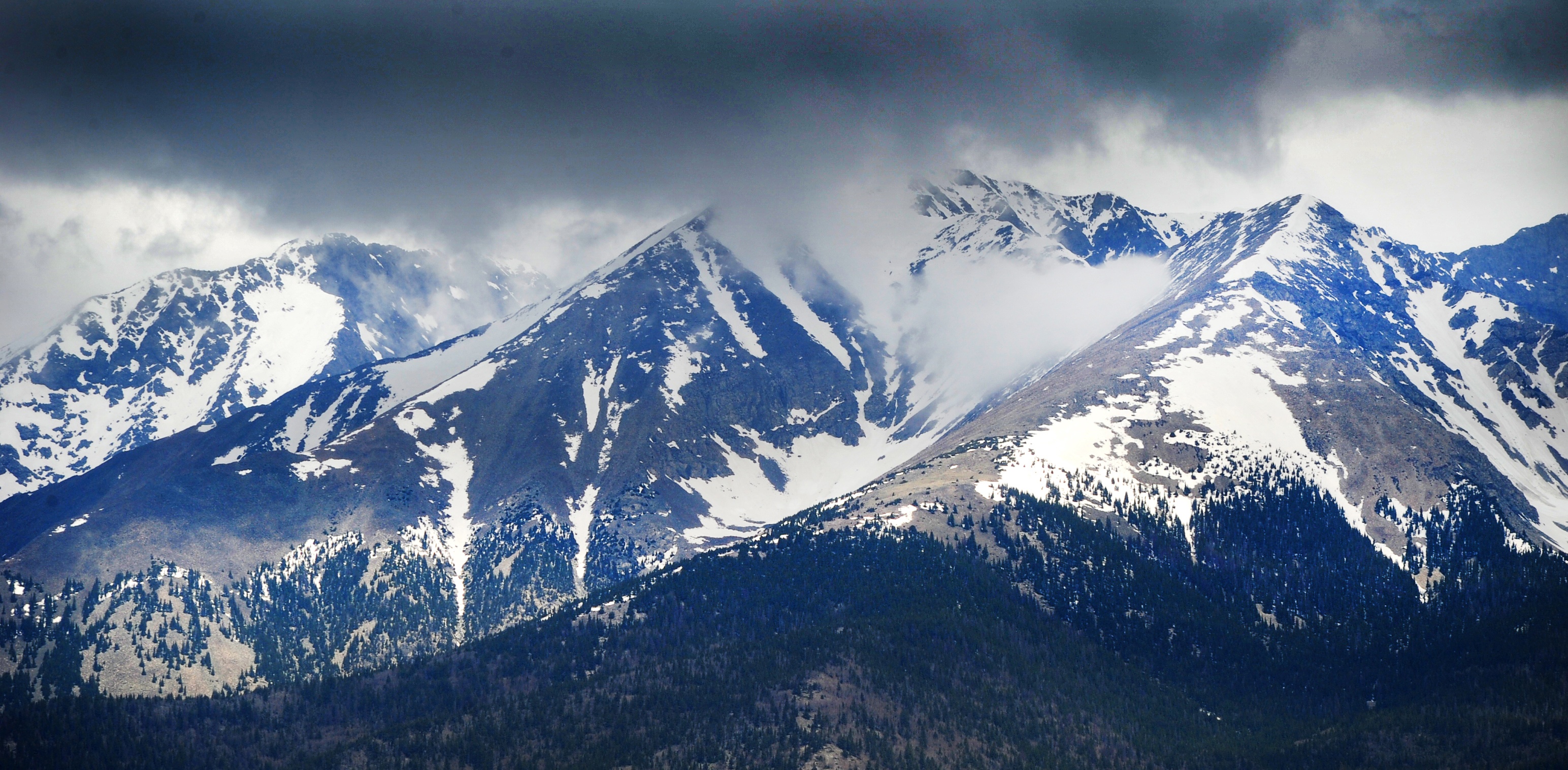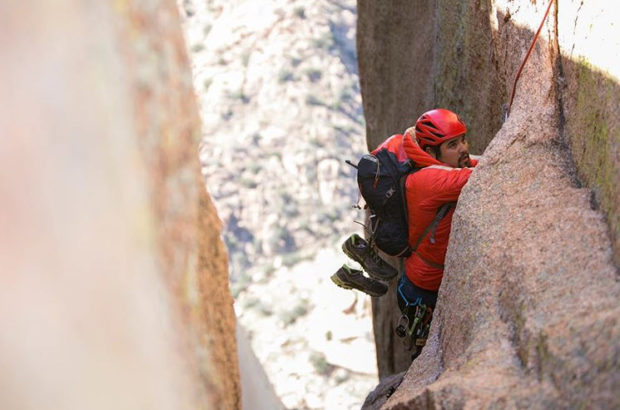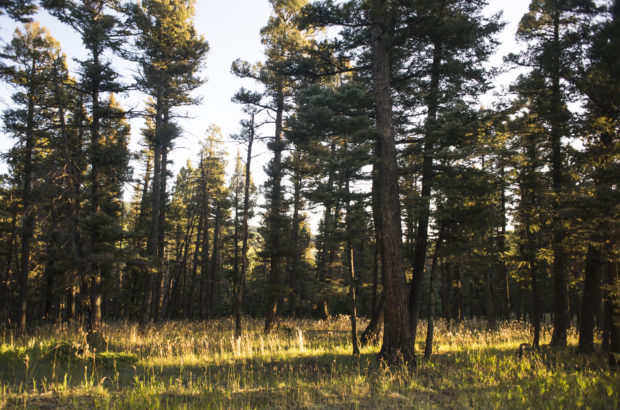We have much more to do and your continued support is needed now more than ever.
“We want to tell our own stories”: Public Lands and Indigenous Histories

For National Public Lands Day, the National Wildlife Federation talked to Len Necefer, a member of the Navajo Nation who founded NativesOutdoors, an outdoor gear company that works with indigenous artists and athletes to further their outdoor explorations. The company also serves as a digital communication platform to encourage Native Americans to connect with public and tribal lands and then tell their stories. An avid outdoor adventurer himself, Necefer has a long history of fighting for indigenous rights. He worked at the Department of Energy’s Office of Indian Energy Policy and Programs and currently serves as a professor with the American Indian Studies program and the Udall Center for Public Policy at the University of Arizona.

This interview has been edited and condensed.
Q: Tell me about your childhood growing up in the Navajo Nation and how it shaped your connection to the outdoors.
Necefer: One of the pieces that was really critical was the element of stewardship, which is just engrained culturally for us. I participated in traditional hunting, traditional fishing and farming and medicinal herb gathering. Some of that was on tribal lands but most of our ancestral territory extends into Colorado and into other areas that are now public federal and private lands, state lands as well. And so as a kid I didn’t really understand the difference. It just all seemed contiguous. As I got older I began seeing in all the ways it was different and how it was also challenged by things like energy development. As a kid I remember going out to these places and there weren’t any oil rigs and we’d be collecting herbs and doing ceremonies and such. Now these places are filled with oil derricks every 1/8 of a mile, and there’s truck traffic everywhere.
I think one of the challenges that we are now facing is ‘how do we manage these lands more sustainably?’ One of the pieces that is really critical is that we have to talk to the people that have been on these places the longest. It’s important that tribes have a seat at the table and are part of the discussion. Sometimes that happens in a meaningful way and sometimes it’s sort of like checking the box.
Q: You quit your job at the Department of Energy and promptly left to protest the Bears Ears Monument downsizing. What inspired that?
Necefer: [laughs] I’m not really cut out for government work, I think I’m a little too creative for that space. I was hired during the Obama administration where there was much more favorable policies and much more informed policies. I believe a stable and healthy environment is critical to a strong economy. I think the current administration sees environmental protections as an impediment to the economy and that economic growth is more important than environmental protection. There’s just different values. I was being asked to implement policies that would be mortgaging our public lands and tribal lands and Native people, in the name of economic growth and energy dominance. It just didn’t seem right.
I grew up with a Grandfather who was a uranium miner. You can do a Google search about uranium mining on the Navajo Nation and you’ll see it’s pretty atrocious. We’re still living with the legacies of those policies. With this administration, we’re returning to this idea of energy and mineral resource extraction at any cost. And they’re largely dumping it on the backs of poor communities and minority communities.

Q: Tell us about the founding of NativesOutdoors and how you’ve used as a megaphone for Native communities while being an apparel & lifestyle brand at the same time.
Necefer: If you look at the outdoor space now, people are buying native designs. Companies are appropriating the designs and not giving credit where it’s due. I saw that as an opportunity, because people like these designs and people will pay for them. NativesOutdoors is creating a stream of revenue that supports native communities.
Q: Through NativesOutdoors, you’ve been using communication as a tool in the diversity, equity, inclusivity and justice world, such as making sure mountains are called by their native names.
Necefer: The big thing is we’re wanting to tell our own stories. At the end of the day I want to engage young native folks in these places. They have smartphones, so the easiest way to connect with them is on these mediums. Having grown up learning the Navajo & Dine ways of knowing, through oral transmission and storytelling from my Grandparents – I’ve seen how that sort of mode isn’t working in the same way as it has for millennia. So how do you then adapt and shift and provide the knowledge in a way people still want it? I think when we talk about indigenous people and the outdoors, it’s so critical. In many cases it’s Native communities that are on the front lines dealing with climate change, the fossil fuel industry, especially in the Arctic. It becomes a very different discussion because native people to this country have a very real legal and political standing that is different than any other minority group. In the eyes of the Supreme Court, Native Americans and indigenous people are not viewed as a minority group, we are seen as a political class. That has a basis in treaties that basically ensures there is some sort of consultation in the management of public lands.
Q: What challenges do tribal members face in terms of access outdoor recreation and how do non-tribal members assist in changing any cultural or literal barriers that tribes face?
Necefer: In order for folks to be supportive of tribes and issues around public lands, it’s important to understand that there are 576 unique tribal governments that have their own relationships. I think the other thing is that the idea of Native Americans as a racial class is a very new thing. It’s something that has only truly existed in the past 150 years. And Native Americans across the board are so different – there’s a lot of variety of relationships that are there and it has to be very context specific. If you were to talk about Virginia versus Alaska [Native Americans], the issues are so vastly different. It’s like comparing China and Uganda. I think in the DEI [diversity, equity and inclusion] space, I’ve seen it over and over and over, Native Americans just get lumped together and that’s more harmful than it is helpful. I think if we’re talking about public lands, we have to be very specific to the people that we’re talking about. The issues are very contextualized and localized. Knowing the history, knowing something about the tribes in the area and their significance is really important to being supportive of it because the nuance in these cases really matter. The best way people can be supportive? Learn that history.
Q: Over-recreation is oftencited as a main catalyst for the destruction of public lands. How does the outdoor culture balance increasing access while protecting public lands?
Necefer: It’s a cultural issue. I don’t think more people going outside is a problem, it’s how they go outside and recreate. One of the key components that ties a lot of indigenous communities to landscapes is this idea of reciprocity. For everything we take from the land we try to give something back.
You can follow the adventurous indigenous athletes and their stories of the outdoors, ranging from marathon-racing, to climbing, to backcountry skiing and everything in-between, on Instagram at @NativesOutdoors. Len can also be found at @LenNecefer on Instagram.
Like what you read? Please consider making a donation to support our critical conservation work protecting wildlife and wild places:





















